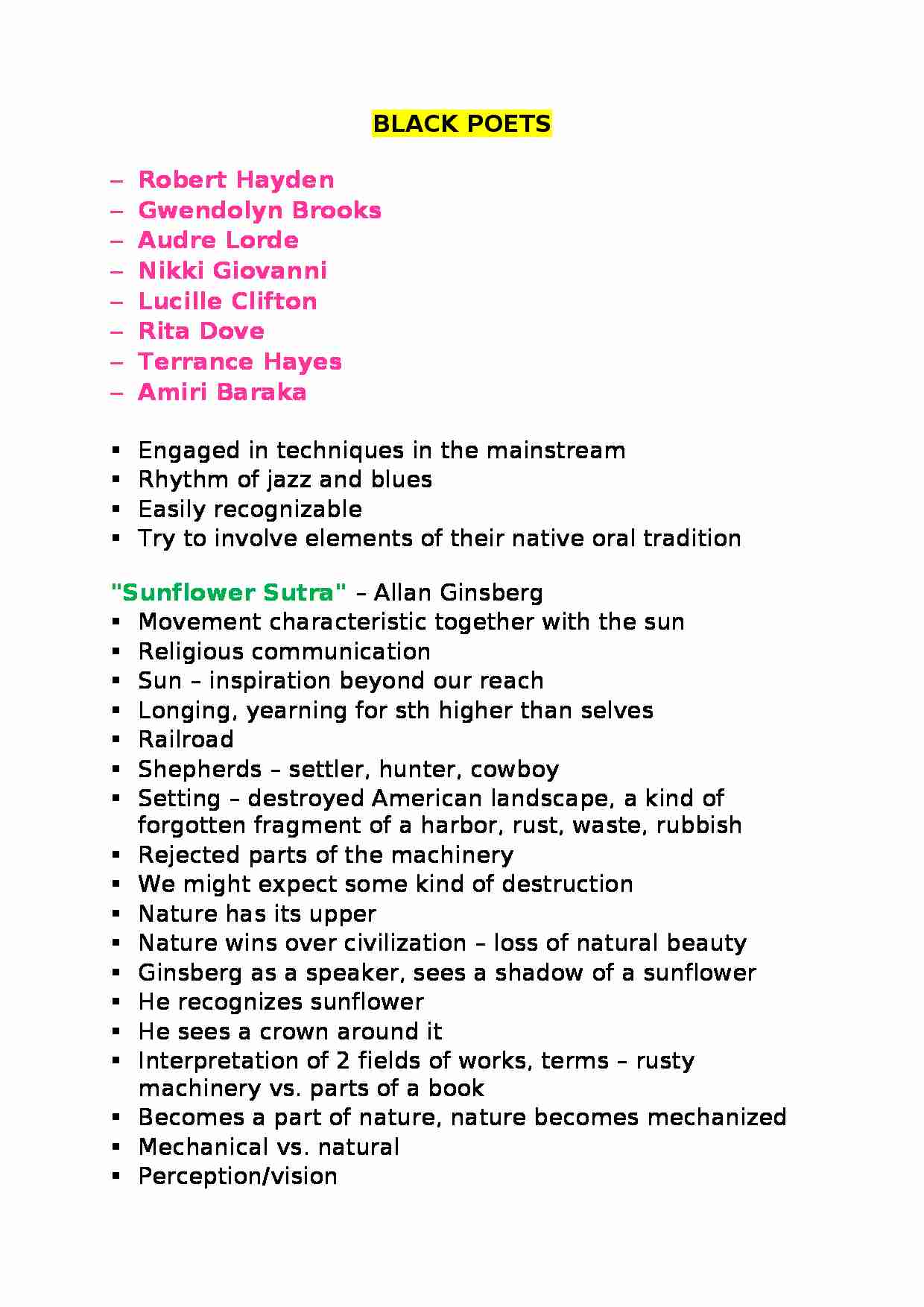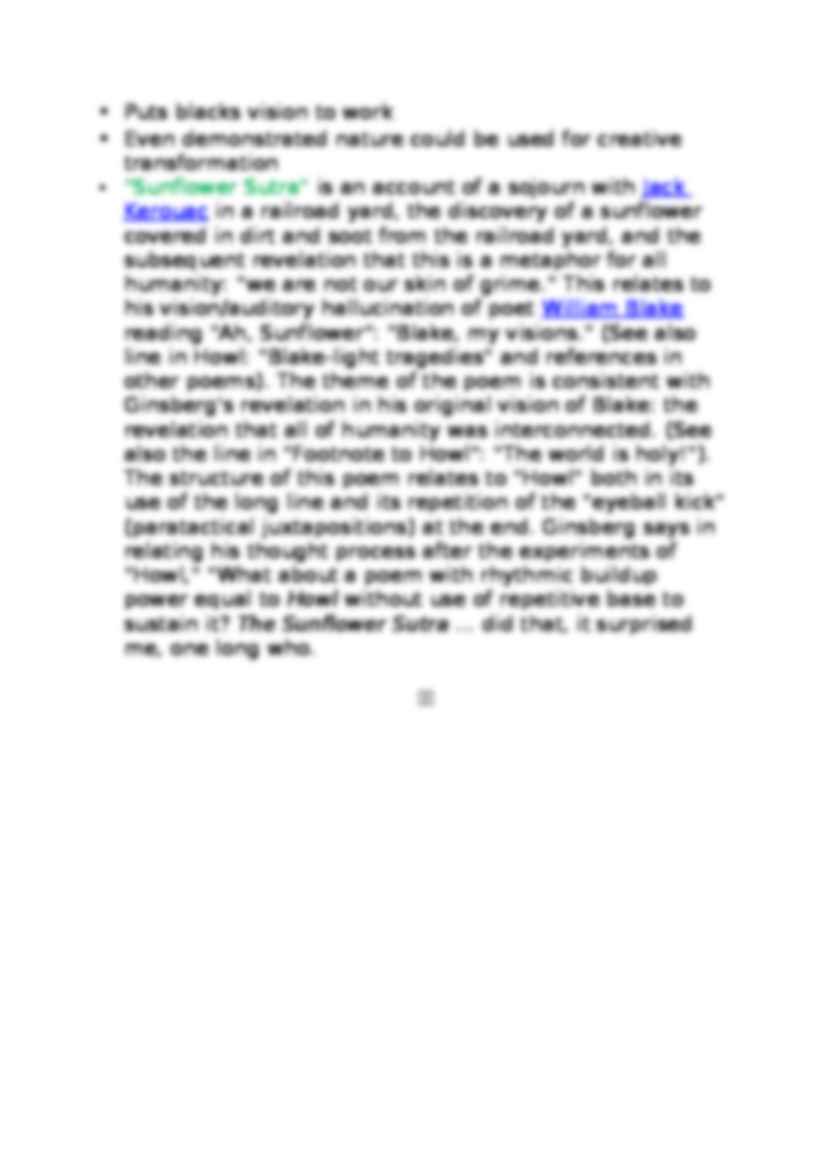To tylko jedna z 2 stron tej notatki. Zaloguj się aby zobaczyć ten dokument.
Zobacz
całą notatkę


Black poets
Robert Hayden
Gwendolyn Brooks
Audre Lorde
Nikki Giovanni
Lucille Clifton
Rita Dove
Terrance Hayes
Amiri Baraka
Engaged in techniques in the mainstream
Rhythm of jazz and blues
Easily recognizable
Try to involve elements of their native oral tradition
"Sunflower Sutra" - Allan Ginsberg
Movement characteristic together with the sun
Religious communication
Sun - inspiration beyond our reach
Longing, yearning for sth higher than selves
Railroad
Shepherds - settler, hunter, cowboy
Setting - destroyed American landscape, a kind of forgotten fragment of a harbor, rust, waste, rubbish
Rejected parts of the machinery
We might expect some kind of destruction
Nature has its upper
Nature wins over civilization - loss of natural beauty
Ginsberg as a speaker, sees a shadow of a sunflower
He recognizes sunflower
He sees a crown around it Interpretation of 2 fields of works, terms - rusty machinery vs. parts of a book
Becomes a part of nature, nature becomes mechanized
Mechanical vs. natural
Perception/vision
Puts blacks vision to work
Even demonstrated nature could be used for creative transformation
"Sunflower Sutra" is an account of a sojourn with Jack Kerouac in a railroad yard, the discovery of a sunflower covered in dirt and soot from the railroad yard, and the subsequent revelation that this is a metaphor for all humanity: "we are not our skin of grime." This relates to his vision/auditory hallucination of poet William Blake reading "Ah, Sunflower": "Blake, my visions." (See also line in Howl: "Blake-light tragedies" and references in other poems). The theme of the poem is consistent with Ginsberg's revelation in his original vision of Blake: the revelation that all of humanity was interconnected. (See also the line in "Footnote to Howl": "The world is holy!"). The structure of this poem relates to "Howl" both in its use of the long line and its repetition of the "eyeball kick" (paratactical juxtapositions) at the end. Ginsberg says in relating his thought process after the experiments of "Howl," "What about a poem with rhythmic buildup power equal to Howl without use of repetitive base to sustain it? The Sunflower Sutra ... did that, it surprised me, one long who.
... zobacz całą notatkę




Komentarze użytkowników (0)